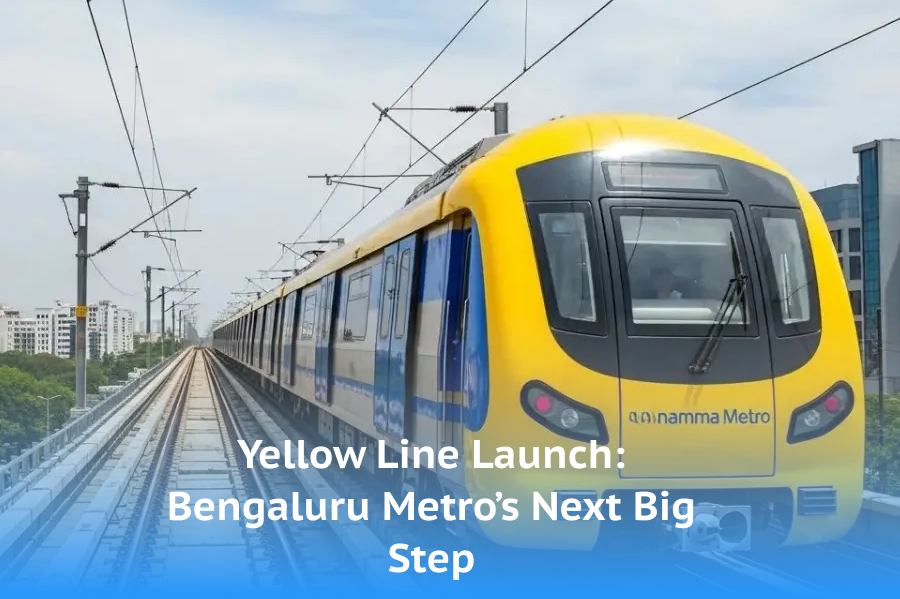What’s Going On?
- The Yellow Line, a 19 km elevated corridor connecting Rashtriya Vidyalaya Road (RV Road, a Green Line interchange) to Bommasandra via Electronic City, is finally set to launch on August 10, 2025, with full operations from August 11 after PM Modi inaugurates it.
- BMRCL has pushed opening plans multiple times due to rolling stock shortages and regulatory delays. Construction finished months ago, but only 2 train‑sets arrived until early 2025.
- Final safety clearance came in early August from the CMRS, clearing the path for commercial service.
⏱ Scheduled Service & Frequency
- Operating hours will be 5:00 AM to 11:00 PM.
- Initially three trains, running at 20–25-minute headways, expecting to serve ~25,000 commuters per day.
- Once more train sets arrive (full complement of 15 rakes), frequency should shrink to ~3–4 minutes during peak hours, potentially serving 1.5–2 lakh riders daily.
💰 Revenue Potential
- In early days, daily revenue is projected at ₹10–15 lakh/day, ramping to ₹60 lakh/day at full scale.
- That’s ₹3–5 crores per month in steady-state metro farebox earnings—plus non-fare income from retail and station branding.
- One startup of note: Infosys and Biocon funded key stations, opening up revenue through corporate partnerships.
🎯 Risks & Challenges
- Staff sourcing: BMRCL has hired outsourced staff for initial operations to meet the August 15 deadline, which may impact service consistency.
- Capacity limits: With only three trains, 20–25-minute gaps may lead to overcrowding, especially through RV Road hub.
- Fare sensitivity: Ridership could be dampened since fares rose ~130% earlier this year—criticism even reached Parliament over transparency concerns.
🧭 What It Means for Bengaluru & Tech Corridor
- This line represents a giant leap for Southern Bengaluru connectivity, slicing 60% off commute times between Electronic City and central Bengaluru, and unclogging busy Hosur Road.
- For tech employees and residents along the corridor, this is poised to be a real game‑changer: faster, cleaner, stress‑free transit.
- Widespread implications: New residential and commercial developments likely near stations; real estate premiums may surge; traffic congestion may ease gradually.
✅ Bottom Line
We’re looking at a high-stakes move from BMRCL: a delayed but decisive entry into a critical commuter corridor. The initial schedule—5 AM to 11 PM, 20–25-minute frequency, 25,000 daily riders—is the pilot phase. Once full trainsets are operational, frequency plummets and ridership—and revenue—could explode.
🔮 What's Next?
- Can frequency improve to 10 min or less within the first month?
- How will commuter behaviour adapt—can ₹60/day fares sustain ballpark 60,000–80,000 daily riders early on?
- Watch for early performance metrics: crowding, punctuality, and any service snafus with outsourced staff.








Comments